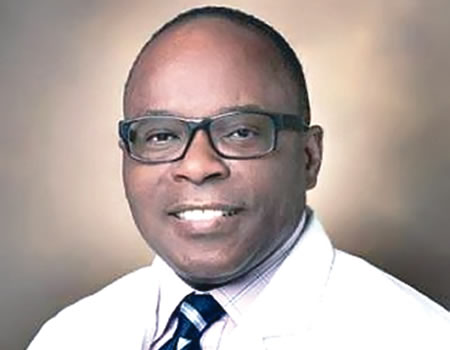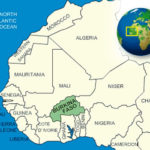INTRODUCTION
The last few decades have seen the evolution of sickle cell disorder (SCD) from a lethal condition, to a chronic disorder that is increasingly compatible with good quality lives and longer life expectancies. In high-income countries, about 95% of children with sickle cell anaemia will live to be 18 years old. For those who reach adulthood,the average life-expectancy is about 55 years. Even in Nigeria, we have several men and women with the sickle cell anaemia who are grandparents and or retired pensioners. The use of hydroxyurea, the only approved therapy for SCD, has significantly decreased the frequency and severity of pain crises and of the lethal acute chest syndrome, resulting in greater survival.
However, Bone Marrow Transplant (BMT) is the only cure for SCD which offers a chance to live a normal quality and duration of life. Although sickle cell anaemia (Hb SS) and sickle cell beta zero thalassemia (Hb Sb thal) phenotypes typically represent those at highest risk for complications and the most likely to want a bone marrow transplant (BMT), other phenotypes, such as Hb SC or Hb Sb+ thal, are not always spared the complications of SCD.
How a bone marrow transplant works
Bone marrow is the soft tissue inside your bones that makes blood-forming cells. Blood-forming cells are immature cells (also called blood stem cells) that grow into the 3 types of cells, each with specialized functions, within our blood circulation. They are red blood cells, white blood cells, and platelets. When they become mature, these cells leave the bone marrow and enter the blood circulation. Healthy bone marrow and blood cells are essential for normal lives. Different diseases, such as SCD, can impair the function of the bone marrow. When this happens, a normal bone marrow transplant can effect a cure. The normal bone marrow stem cells are transplanted to replace the unhealthy bone marrow stem cells.
Before transplant, chemotherapy (with or without radiotherapy), is applied to destroy the unhealthy bone marrow cells. Healthy bone marrow cells are aspirated from the bone marrow of a person (the donor) whose body cells (known as HLA) would have been shown to match those of the person (the recipient) to be transplanted. Bone marrow cells from the donor are infused into the blood stream of the recipient through an intravenous (I-V) catheter. It is just like receiving a blood transfusion. Once in the circulation, the bone marrow cells from the donor find their way into the recipient’s bone marrow. There, they grow and start to make healthy blood cells.
Source of haemopoietic (blood-forming) stem cell transplants (HSCT)
There are 3 sources of blood-forming stem cells used in transplants. They are:
- Bone marrow: The soft, spongy tissue inside of bones
- Peripheral blood stem cells (PBSC): From the circulating blood (difficult to obtain)
- Umbilical cord blood: Collected from the umbilical cord and placenta of newborn babies
If you need a bone marrow transplant, the doctor will first test family members to try to find a matching donor. If a match donor is not found in your family, your doctor can search the “Be the Match Registry”, which has 22.5 million people and 601,000 cord blood units worldwide. This is mostly accessible in high income countries. For some patients, doctors at some hospitals will look for a donor who matches half of your HLA markers. This type of transplant is a haplo-identical transplant(also called a half-matched or partially matched related transplant). In these transplants, donors and patients share half-matches of the HLA markers. Parents are a half-match for their children and vice versa. Siblings (brothers and sisters) have 50% (1 out of 2) chance of being a half match for each other.
Not all transplant centres will do haplo-identical transplants. But it may be suggested as an option for you if your doctor cannot find a closely matched family member, unrelated donor, or cord blood unit.
When to transplant for sickle cell disorder (indications for transplant)
Indications are either directed to patients requiring lifelong transfusion due to a high risk of primary or recurrent strokes (stroke and elevated transcranial Doppler velocity), a significant impact on quality of life (frequently recurrent painful crises, priapism, acute chest syndrome, osteonecrosis of multiple joints, and after silent infarcts with neuropsychological decline), difficulty maintaining transfusion therapy due to the difficulty in finding compatible units (red cell alloimmunization), or the unique challenges of availability in Nigeria, patients with pulmonary hypertension, sickle-related liver injury, iron overload, and kidney damage (nephropathy).
Result of bone marrow transplant
BMT results in stabilization of organ function and gradual amelioration of sickle cell complications such as strokes, lung damage, and recurrent pain episodes.
The use of standard-intensity regimen BMT for children results in 90% overall survival, 82% to 100% disease-free survival (no more sickle cell complications). However 8% to 18% lose their graft after transplant (graft rejection) and 4% to related mortality. Reduce intensity chemotherapy strategies are increasingly being undertaken in recent years to offset toxicities. This is better tolerated and results in an 86% to 90% disease-free survival (no more sickle cell complications) – even in adult patients.
However, the likelihood of having a sibling being HLA-identical is only 25%, and some siblings will have SCD, further limiting the chance of having a suitable donor. Therefore, researchers have moved to investigate alternative donor sources.
Alternative-donor HSCT is defined as any donor other than a matched sibling, includes Matched Unrelated Donor Transplant (MUD), Mismatched Marrow Donor(less than fully-matched donor), Haplo-identical Donor (using at least a 50% matched, related donor-including father and mother), unrelated cord blood transplant (from any new born other than family relative). However, most of these approaches for SCD are presently being investigated in the context of clinical trials to determine their safety for patients with SCD. The study results will provide useful information about other donor options for patients with SCD.
Long term outcome and complications
BMT offers long-term protection from the complications of clinical and subclinical complications associated with SCD, regardless of donor type. Complications that commonly develop in patients with SCD, including Stroke, pulmonary hypertension, acute chest syndrome, proteinuria and haematuria, were not observed in patients after successful BMT. Following a successful BMT, patients with SCD also experience better overall quality of physical, psychological, and social functioning in most aspects by one year post-BMT. Toxicity is worst in older age groups (such as adolescents or young adults) and those with advance SCD. Hence the reduced intensity approach is being explored to reduce BMT-associated toxicities, such as veno-occlusive disease, Liver toxicity, neurotoxicity (seizures, stroke, and brain hemorrhage), growth failure in post-pubertal recipients, hypogonadism (as high as 70%), and sterility. A major concern following standard regimen BMT is sterility and hence attempts at reducing the intensity of the initial chemotherapy and preserving the patient’s fertility before transplant (banking of sperms in males and eggs in females) is encouraged.
Graft-versus-host disease (GVHD) is another common complication after a BMT. It can affect different parts of the body, including the skin, eyes, mouth, stomach, and intestines. GVHD occurs because of difference between the cells of the body of the donor and those of the recipient.
There are two types of GVHD:
- Acute GVHD:Develops in the first 100 or so days after transplant but may occur later. This primarily affects the skin, stomach, intestines, and liver.
- Chronic GVHD: Usually develops 3-6 months after transplant, but signs may appear earlier or later. Someone who has had acute GVHD is more likely to have chronic GVHD. Acute and chronic GVHD can range from mild to severe.
GVHD is serious, but there are several options for treatment. The use of matched sibling donor rather than an unrelated donor reduces the risk of GVHD.
Conclusion
BMT for patients with SCD has progressed considerably. Many studies are ongoing to perfect matched sibling marrow, cord blood, or mobilized peripheral blood as the best source, with low graft rejection, low GVHD and high disease-free survival rates. For transplant-eligible patients without HLA-matched sibling donors, fully-matched, unrelated donor, cord blood or haplo-identical donor options appear to be the next best options, but they need to be done in a clinical trial setting. Ongoing studies in SCD should provide data that are currently lacking. However, for most patients in Nigeria who wish to undergo a BMT, they for now need to travel abroad, usually with family members, including the donor, at a significant cost. Also, long-term care is required for many patients following BMT. Developing a BMT program adapted to the unique challenges encountered in Nigeria, with needed expertise and infrastructure locally, would help address some of these unique challenges.
NB: Sickle Cell Foundation Nigeria will be commencing Bone Marrow Transplant services by September 2019.
WATCH TOP VIDEOS FROM NIGERIAN TRIBUNE TV
- Let’s Talk About SELF-AWARENESS
- Is Your Confidence Mistaken for Pride? Let’s talk about it
- Is Etiquette About Perfection…Or Just Not Being Rude?
- Top Psychologist Reveal 3 Signs You’re Struggling With Imposter Syndrome
- Do You Pick Up Work-Related Calls at Midnight or Never? Let’s Talk About Boundaries






